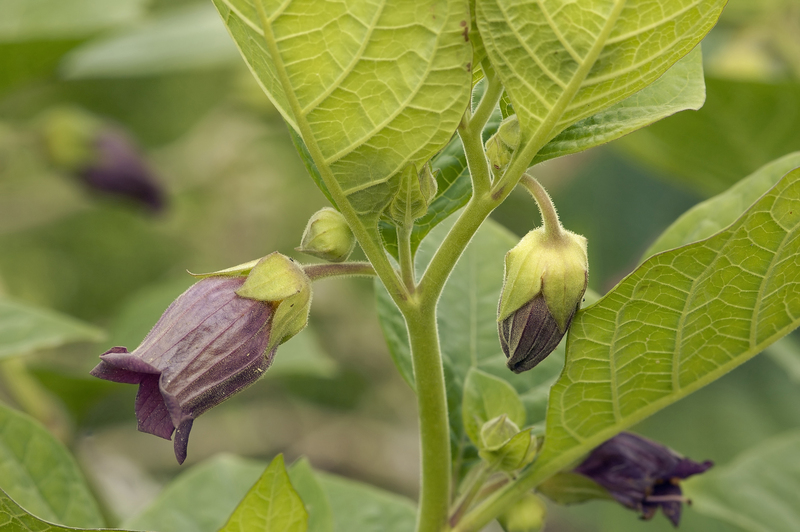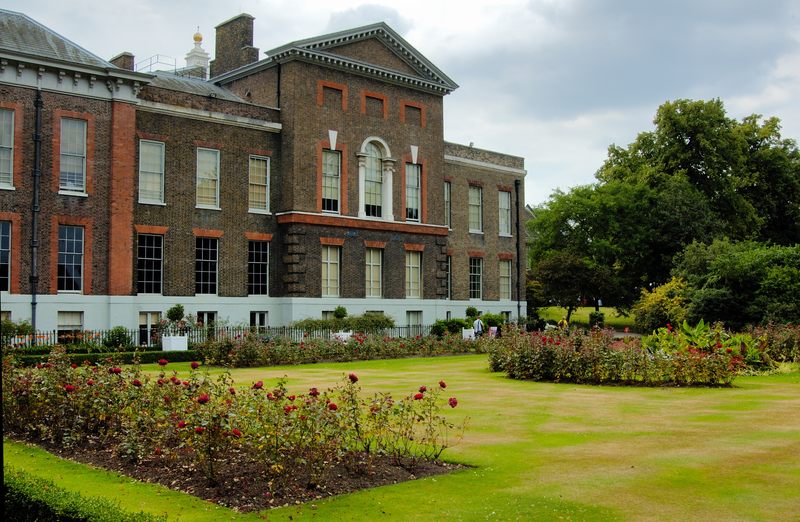Sculpting Nature: Hedge Trimming Shapes and Techniques
Posted on 22/08/2025
Sculpting Nature: Hedge Trimming Shapes and Techniques
Hedgerows have been a beloved feature of gardens and landscapes for centuries, blending functionality with artistic flair. The art of hedge trimming is more than simple maintenance--it's a creative pursuit that allows gardeners to sculpt living masterpieces. From formal shapes to imaginative topiary, there are innumerable hedge cutting techniques and trends that can transform ordinary shrubs into works of natural art. In this comprehensive guide, we'll dive deep into hedge sculpting methods, highlight popular shapes, cover the best tools, and offer expert maintenance tips to help you master hedge shaping in your own outdoor space.
The Importance of Hedge Trimming
Hedges serve multiple purposes in landscaping--offering privacy, blocking wind, defining property lines, or adding an architectural element to the garden. But, beyond their practical role, hedge shaping enhances curb appeal and expresses personal style. Trimming and shaping hedges is essential to:
- Promote healthy growth: Regular pruning encourages dense foliage and prevents diseases.
- Enhance aesthetic appeal: Neatly trimmed hedges contribute elegance and sophistication to any garden.
- Maintain structure: Consistent shaping prevents overgrowth and supports the desired form.
- Increase property value: Well-maintained landscapes attract prospective buyers and boost home prices.
Why Proper Hedge Pruning Techniques Matter
Using the right hedge trimming methods not only creates visually pleasing shapes but also ensures the longevity and health of your plants. Incorrect technique can lead to unsightly gaps, reduced flowering, or even plant death. Therefore, understanding the science and artistry of hedge sculpting is crucial for achieving breathtaking results.

Popular Hedge Shapes Explained
One of the joys of sculpting hedges is the vast array of shapes that can be achieved. Whether you're looking for the stately lines of a formal garden or the whimsy of fanciful topiary, choosing the right shape is the first step in mastering hedge trimming artistry.
Classic Geometric Forms
- Rectangular Hedges: The timeless choice for borders and property lines. This shape is straightforward but requires precision to maintain crisp, clean edges.
- Rounded Hedges: Softer and more forgiving in appearance, rounded shapes are popular for lining paths or creating smooth garden transitions.
- Pyramidal/Conical Hedges: With a wider base tapering towards the top, these shapes help maximize sunlight exposure and are perfect for statement entrances.
- Spirals and Columns: Vertical forms such as columns and spirals add drama and height, often used as focal points or flanking driveways.
Creative Topiary Designs
- Animal Shapes: Bring your garden to life with whimsical creatures--literally. Commonly sculpted animals include birds, rabbits, or abstract silhouettes.
- Ornamental Balls and Cubes: Simple yet striking, spherical or box-shaped hedges exude elegance and are easier to maintain once established.
- Fantastical Figures: Unicorns, boats, or abstract waves--the only limit is your imagination. Complex shapes require a patient hand and regular upkeep.
Freeform and Naturalistic Styles
Not all hedge pruning techniques aim for symmetry. Informal, flowing forms can seamlessly blend hedges into the landscape, evoking a more natural feel while still benefiting from careful trimming.
Essential Tools for Hedge Sculpting
To achieve crisp lines and long-lasting shapes, the right tools make all the difference. Investing in quality equipment ensures efficiency and helps protect your plants from damage. Here's what you need for expert hedge shaping:
- Manual Hedge Shears: Ideal for precise shaping and detail work; look for sharp, ergonomic designs.
- Electric or Battery-Powered Hedge Trimmers: Perfect for trimming large hedges or creating straight lines swiftly.
- Pruning Loppers and Secateurs: For thicker branches and final finishing touches.
- Topiary Frames or Guides: Wire frames help maintain intricate patterns as you develop your skills.
- Protective Gear: Always wear gloves, eye protection, and ear defenders for safety.
- Measuring Tools: Stakes, strings, and tape measures provide reference points for symmetry and consistency.
Troubleshooting Common Tool Issues
Regularly clean and sharpen your tools to ensure smooth cuts and reduce the risk of disease transmission. Dull blades can tear stems, making hedges vulnerable to infection and dieback. Proper tool maintenance is a cornerstone of effective hedge trimming.
Mastering Hedge Trimming Techniques
Hedge sculpting blends horticultural knowledge and artistic finesse. To shape your hedges with confidence, follow these time-tested gardening strategies:
Choosing the Right Time
The timing of your hedge pruning depends on the species and your climate. As a rule of thumb:
- Evergreen Hedges: Trim in late spring or early summer for quick regrowth; avoid autumn to prevent frost damage.
- Deciduous Hedges: Early spring pruning encourages bushier growth after dormancy.
- Flowering Hedges: Prune immediately after bloom to avoid cutting off next year's buds.
Step-by-Step Hedge Shaping Method
- Plan Your Design: Visualize or mark the desired outline using stakes, strings, or topiary frames for guidance.
- Start with Coarse Cuts: Begin by removing larger, unwanted branches to expose the basic shape.
- Trim from the Bottom Up: This technique ensures an even, stable base and prevents lower branches from being shaded out.
- Tilt Your Blade: For straight sides, angle your trimmer slightly inward to create a gentle slope--this allows sunlight to reach the base and encourages full growth.
- Finish with Fine Detailing: Refine the shape using shears or secateurs for a tidy, polished appearance.
Tip: Step back frequently to assess your progress. The best sculptors re-evaluate their work from multiple angles to catch any asymmetry early on.
Secrets to Stunning Topiary
- Be patient: Topiary requires ongoing care. Start with simple shapes and advance as your skills grow.
- Use young, flexible plants: These are easier to train and less likely to suffer from aggressive pruning.
- Trim regularly: Little and often prevents plants from losing shape, especially during the peak growth season.
- Feed and water: Topiary plants have higher maintenance needs. Balanced fertilizer and consistent moisture promote lush, responsive growth.
Best Plant Choices for Hedge Shaping
Not all shrubs are cut out for elaborate shaping. Certain species respond far better to rigorous pruning and repeated cuts. For successful hedge sculpting, consider these popular options:
Top Plants for Hedge Trimming Art
- Boxwood (Buxus sempervirens): The classic choice for topiary and formal shapes, boxwood offers dense foliage and slow, steady growth.
- Yew (Taxus baccata): Valued for its resilience and ability to regenerate from old wood, yew can be sculpted into intricate designs.
- Privet (Ligustrum spp.): Fast-growing and adaptable, privet is ideal for hedges that require frequent reshaping.
- Holly (Ilex aquifolium): Offers glossy, evergreen leaves and can be shaped into both geometric and freeform styles.
- Hornbeam (Carpinus betulus): Deciduous with crisp leaves and tight branching, hornbeam holds its shape well throughout the year.
- Lonicera (Lonicera nitida): Compact growth and tolerance for heavy pruning make this shrub perfect for detailed topiary work.
For unique landscaping effects, don't overlook flowering shrubs or native plant options that can be creatively trained with patience and regular pruning.
Maintaining Your Sculpted Hedges
Once you've mastered hedge shaping techniques, ongoing maintenance guarantees your artistry lasts. Healthy, well-tended hedges remain lush, disease-free, and beautifully sculpted year after year.
Routine Care and Seasonal Tasks
- Regular Inspections: Look out for pests (like spider mites or scale insects) and signs of disease, including browning or stunted growth.
- Annual Feeding: Apply a slow-release balanced fertilizer in spring to support dense, vigorous foliage.
- Weed and Mulch: Remove weeds around the base and apply mulch to retain moisture and suppress unwanted growth.
- Monitor Water Needs: Especially important during prolonged dry spells or for newly established plants.
Addressing Common Hedge Problems
- Gaps and Brown Spots: These can be filled by strategic pruning, encouraging new shoots to develop.
- Overgrown Hedges: Slowly reduce size over multiple seasons to avoid shocking the plant.
- Uneven Growth: Trim during the active growing season and ensure sunlight reaches all parts of the hedge.
Environmental Benefits of Sculpted Hedges
Hedge sculpting isn't purely aesthetic. Well-maintained hedgerows provide environmental benefits, including:
- Wildlife Habitat: Dense foliage shelters birds, pollinators, and beneficial insects.
- Wind and Noise Reduction: Thick, carefully trimmed hedges act as natural barriers.
- Carbon Sequestration: Healthy hedges absorb carbon dioxide, contributing to cleaner air.
- Soil Erosion Control: Root systems anchor the soil, preventing erosion on slopes and boundaries.
Merging Sustainability with Creativity
Consider choosing native or drought-resistant species when starting new hedge sculpting projects, reducing water use and supporting local ecosystems. Sustainable gardening is at the heart of modern hedge trimming techniques.

Hedge Sculpting: Inspiration and Trends
The world of hedge shaping and topiary art is ever-evolving. Contemporary garden designers blend traditional forms with imaginative new concepts--from living sculptures in public parks to private backyard wonders. Current trends include:
- Abstract and Geometric Installations: Pushing the boundaries of symmetry and proportion in eye-catching arrangements.
- Living Walls and Vertical Gardens: Incorporating sculpted hedges for privacy screens and green accents in urban environments.
- Eco-Friendly Topiary: Choosing low-maintenance, native shrubs shaped lightly for a wilder look.
- Themed Gardens: Sculpting animal figures or fairy tale motifs to delight visitors and children.
Your Hedge Trimming Journey Begins
The art of hedge sculpting merges practical gardening with the limitless realm of creativity. Whether you prefer precise, formal edges or dreamlike creatures crafted from living wood, mastering hedge trimming shapes and techniques sets your garden apart. Start with the basics, invest in quality tools, and let your imagination bloom as you shape and maintain your unique green sanctuary.
Happy sculpting! May your hedges grow full and your artistry thrive for seasons to come.



